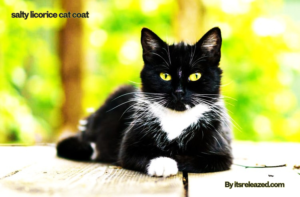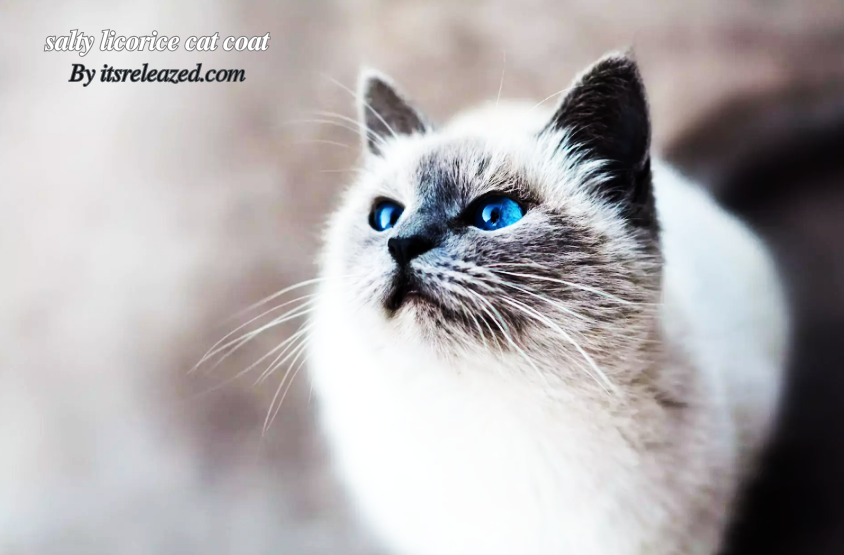Discover the fascinating world of salty licorice cat coat! Learn their unique traits, history, and why they’re a trending topic among cat lovers.
Introduction
The term “salty licorice cat coat” refers to a distinctive fur pattern found in certain cats, characterized by dark and light contrasts that resemble the appearance of salty licorice candy. This captivating coat pattern often includes deep black or dark gray tones interspersed with lighter, salt-like streaks or highlights. This unique coloration has become increasingly popular among cat enthusiasts and breeders alike, drawing attention for its striking and unusual appearance.
Origins and Genetics Behind the Salty Licorice Pattern
The salty licorice cat coat is not merely an artistic description but the result of complex genetic interactions. Coat color and patterning in cats are primarily influenced by the interaction of dominant and recessive genes. Two key genetic factors play a significant role in the formation of this pattern:
- Agouti Gene (A): This gene controls whether a cat’s fur will have banded hairs (agouti) or solid coloration. The presence of the agouti gene leads to a ticked or tabby pattern, which forms the lighter streaks seen in the salty licorice coat.
- Melanin Production Genes: The distribution of eumelanin (black pigment) and phaeomelanin (red or yellow pigment) influences the coat’s overall appearance. Variations in the expression of these pigments create the contrasting shades.
This pattern may also be enhanced by other genetic modifiers that impact how the pigments are distributed, adding to the salt-and-pepper effect that resembles licorice candy.
Characteristics of Salty Licorice Cat Coat
Cats with this distinctive fur pattern exhibit a combination of dark, rich hues contrasted with lighter streaks or speckles. Common characteristics include:
- Dark Base Color: The primary coat color is typically a deep black or dark charcoal.
- Light Speckling or Streaking: Fine white, silver, or light gray markings create a “salted” effect.
- Soft and Textured Fur: The combination of pigments often gives the coat a soft, silky texture that enhances its visual appeal.
This coat pattern is often found in certain breeds known for their diverse and striking color variations, such as the Maine Coon, Norwegian Forest Cat, and Domestic Shorthair.
Breeds Known for Salty Licorice Cat Coat Patterns
While any cat can theoretically display a salty licorice cat coat-like pattern due to genetic variation, some breeds are more likely to exhibit this unique look. These include:
Maine Coon
Maine Coons are renowned for their luxurious, thick fur and wide range of coat colors. The salty licorice pattern often manifests in black smoke or shaded variations within this breed.
Norwegian Forest Cat
Similar to the Maine Coon, the Norwegian Forest Cat features a dense, water-resistant coat. Cats of this breed with a black or silver tabby coloration frequently exhibit a salty licorice appearance.
British Shorthair
British Shorthairs are known for their plush fur and stocky build. The black silver shaded or black smoke variations can produce a coat pattern resembling salty licorice.

Caring for Salty Licorice Cat Coat
Maintaining the beauty of a salty licorice cat coat requires regular grooming and proper nutrition to keep the fur healthy and vibrant. Here are some essential tips:
- Brushing and Grooming
Frequent brushing helps remove loose hairs and prevent matting. Use a high-quality slicker brush or metal comb to detangle and smooth the coat. Long-haired breeds, such as the Maine Coon, may require daily grooming, while short-haired cats can benefit from brushing two to three times a week.
- Nutritional Support
A balanced diet rich in omega-3 and omega-6 fatty acids supports a shiny and healthy coat. High-quality cat food with essential vitamins and minerals helps enhance the vibrancy of the salty licorice pattern.
- Skin and Coat Health Monitoring
Regular vet check-ups ensure that your cat’s skin remains healthy. Issues such as dandruff or excessive shedding can dull the appearance of the coat and should be addressed promptly.
The Appeal of the Salty Licorice Coat
The growing fascination with the salty licorice cat coat can be attributed to its eye-catching and rare beauty. Many cat lovers are drawn to this pattern because it blends mystery and elegance, creating a striking visual contrast that is both bold and refined. Cats with this coat pattern often stand out in cat shows and competitions due to their unique coloration.
Personality Traits of Cats with Unique Coats
Though coat pattern does not directly influence personality, many owners find that their salty licorice-patterned cats exhibit curious and playful temperaments. This may be coincidental, but the combination of a captivating appearance and a dynamic personality makes these cats even more desirable.
FAQs About Salty Licorice Cat Coat
- Are salty licorice coats common in all breeds of cats?
- Can a salty licorice coat change color over time?
- How do I care for a salty licorice cat coat in winter?
- What is the best grooming routine for a salty licorice cat?
- Is the salty licorice cat coat linked to any health issues?
Conclusion
The salty licorice cat coat is a stunning and rare fur pattern that captivates cat lovers worldwide. Its unique combination of dark and light contrasts creates a memorable and visually appealing look. Whether you own a Maine Coon, a Norwegian Forest Cat, or another breed showcasing this fascinating pattern, proper grooming and care will keep your cat’s coat looking its best.



